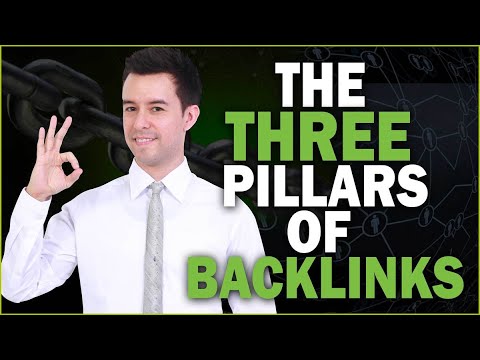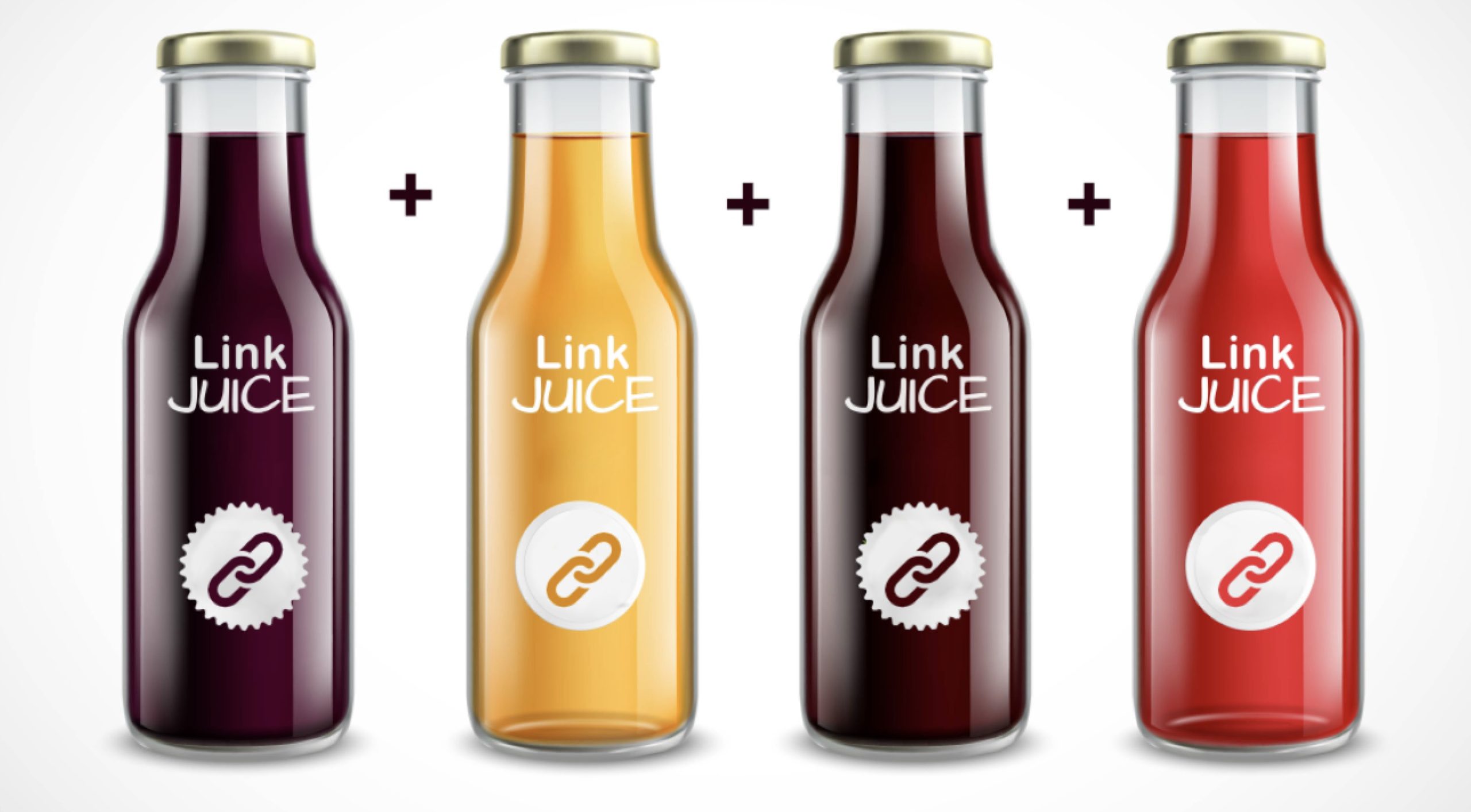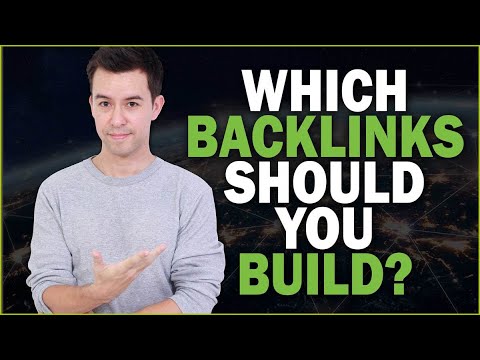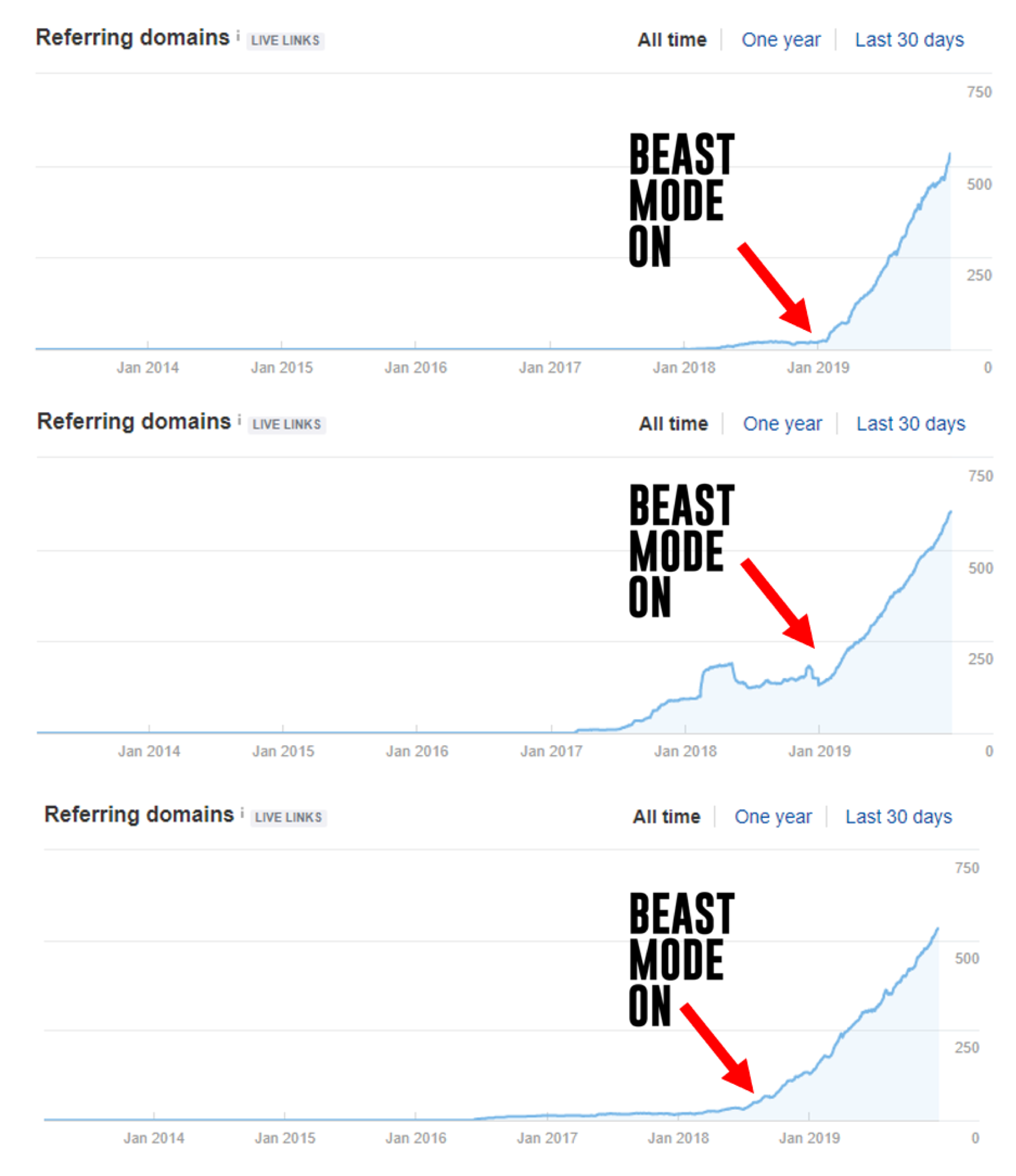Backlinks are still a highly significant ranking factor. Experts in the industry all agree that backlinks are one of Google’s most looked-at signals when determining a page’s rank. But while the importance of backlinks hasn’t changed, link building best practices certainly have. The biggest challenge SEO gurus and business owners face now is adapting their approach to what actually works today.
Because of all of these changes, backlinking in 2021 can be confusing, even for seasoned SEO practitioners. There are so many kinds of backlinks—the good, the bad, and the terrible. There’s guest posts, citations, and even paid links. And determining which backlinks you should aim for is one thing…and figuring out when to build them, and how to get them is a whole ‘nother ball game.
Considering all the work that goes into link building, it’s no surprise that people get overwhelmed. So, to help give you a jumping-off point, I’ve boiled the entire process down to three easy stages that anyone can follow, even if you’re an SEO n00b.
In this article, you’ll learn:
- What kind of backlinks to build at various stages of your site’s growth
- When to build different links to maximize returns
- Other strategies to gain valuable backlinks
Let’s dive right in.
Backlink Theory: The Building Blocks For Building Links
But before we get into the hows of backlinking in 2021, you first need to understand the whys behind it—as in, why does my process work so well?
It becomes a lot clearer if you look at backlinks as a source of three important things: power, relevance, and trust. Here’s what that means for you:
Relevance
Every website, page, and piece of content with a topic or niche. Google then uses backlinks and other contextual information to help determine what your website is all about.
“Relevance” comes from three main places:
- The niche relevance of the piece of content that links to you
- The niche relevance of the other content on the referring domain
- The niche relevance of the anchor text
So, let’s say you got a backlink in an article about golf.
Google’s algorithm will now assume that maybe your site is something related to golf.
Furthermore, if the target backlink’s website is also about golf, then the algorithm will have even more ‘evidence’ that your site is golf related.
See how we’re painting a picture for Google here?
The third and final step to establishing topical relevance is through your anchor text. If the anchor text is ‘best golf driving clubs’, then that’s the final nail in the coffin. All together that’s a pretty strong indicator that your content is closely related to golf, and specifically, golf clubs.
Just be wary of over-optimizing your anchor text and focus on integrating your link in the most natural way possible.
Trust
Trust plays a huge factor in link building. Google’s aim is to provide helpful and authoritative content to its users, and it likes to reward trustworthy sources as a result. But with thousands of websites popping up every day (and not all providing accurate information), how does a search engine decide that one website is more trustworthy than another?
Trust Theory #1: Seed Sites Directly Impact Trust
The first major theory is that trust is established by your distance from one of Google’s trusted “seed sites”. Seed sites are high-quality websites that have built up a lot of goodwill with both its human readers and search engine algorithms.
No one can say for sure which sites are seed sites, but we can make a few educated guesses, especially based on how Google themselves rank these sites.
Now, you don’t necessarily need a backlink from a seed site to mine some of that trust. You can still get trust from regular sites that have links from seed sites.
So while this is the ideal:
Seed site > your website
This is perfectly acceptable as well:
Seed site > another site > your website
Trust Theory #2: Trust Is Determined By Links On Pages Already Generating Traffic & Rankings
The second major theory on how trust is determined by Google’s algorithm is that trust is gained by getting backlinks on websites that rank. Now this isn’t a proven theory, but logistically it makes sense.
Google doesn’t just rank any website. According to a study done by Ahrefs, only 9% of websites on the internet have rankings and get traffic. You could say that because only 9% of websites get traffic and ranking, it’s one of the things that Google is most stingy about.
If Google ranks a site in the top of the SERPs, you can then assume that Google is OK with any outbound links that the page contains. Considering the Google algorithm used to rank websites is most likely a lot stricter than the algorithm used to determine the validity of outbound links, it’s safe to say that a backlink from a well-ranked site won’t go ignored by Google.
Power
There’s an old algorithm called “PageRank”, which is a formula that Google uses to determine how important and authoritative a page is based on the number and power of the links going to it. Google used to even give you an actual score from 1-10, although they removed that feature a couple of years ago.
And when you get PageRank from a backlink, that’s what we in the industry like to call “link juice”. Having more valuable backlinks = more link juice = higher rankings.
You can get some pretty powerful backlinks by inserting your links into existing articles with that already have a lot of link juice. There’s also a variety of gray and black hat techniques (like private blog networks or PBNs) that can get you link juice as well, although these are riskier and are only advised for experienced SEOs.
You need all three (power, trust, relevance) to succeed.
You can have a lot of links from powerful, trustworthy sites, but if none of the linking sites are relevant to your niche, it will take a while for you to rank. The opposite is also true—super relevant sites without enough authority or backlinks themselves won’t get you as far as you want to go.
It’s entirely possible to get power, relevance, and trust from a single backlink, but building your link building approach around this strategy (which many SEO guides do) is a great way to waste both time and money.
My method (which I’ll get to in just a little bit) looks at these three things as completely separate. This way, you can identify which of the three you need more of and tweak your approach as necessary. It’s efficient, it’s easy, and most of all, it’s effective.
Your Step-By-Step Guide To Backlinking
Now that you have good foundational knowledge on what makes a backlink work, it’s time to learn how to make them work for you.
As you’ll soon find out, the best way to efficiently and sustainably grow your business via backlinks is by mimicking the natural way that websites grow… just on a faster schedule. It is SIMPLE, but it does require patience. Don’t expect results overnight, but it is the formula for long-term backlinking success.
Let me break it down for you stage by stage.
Stage 1: Sandbox
The first stage of any website is what I like to call “The Google Sandbox”. At this stage, your website is completely new and ready to get in the link building game. Your main priority at this point should be building trust with Google—so no shady get-rank-quick schemes that could get you penalized.
How do you build trust, then? Simple: just do what any other business would do, only smarter.
One of the first steps is setting up social media profiles on Facebook, Instagram, Twitter, Pinterest, and wherever else your target market is. In this digital age, having a strong social media presence plays a huge role in your business’ success!
Looking to outsource your social profile creation? Here’s where I get mine: Web20 Ranker.
Then, you put up business citations where applicable. Business citations are any references to your NAP (business name, address, phone number). You can get these by adding your business into industry directories or websites like Yelp, Foursquare, the Yellow Pages, etc.
Looking to outsource your business citations? Here’s where I get those too: SEO Butler.
Once you have your basics set up (and your main pages have already been indexed by Google), it’s time to build even more trust. For this, you’re going to start building guest posts.
Why? Guest posts?
Because if you look at natural activity across the internet, you’ll notice that most links are created on brand new pages, rather than existing pages. It’s much more natural for a site to get its first few backlinks from new content; getting links from existing pages in your first few weeks looks a little suspicious.
Guest posts are exactly this. They’re links on new pages that didn’t exist before.
And here, obviously, is where I get my guest posts: Authority Builders.
Remember, the name of the game in the sandbox is to build trust.
So that’s what you’re doing here. You’re building trust by mimicking the natural internet.
Patience is the key here. It can take 2-3+ months in Sandbox alone, and that’s the best case scenario. You don’t want to do too much too fast, or else it will look unnatural and untrustworthy.
How do you know when you’ve built enough trust and jumped out of the Sandbox Stage?
Don’t worry, you’ll know. Your rank tracker and traffic graphs will look vertical that day.
Stage 2: Trustworthy Stage
Stage 2 is the Trustworthy Stage because you’ve already established that your website is credible, relevant, and helpful to your audience. In this stage, it’s important to continue to build trust by building more guest posts links—but now it’s time to turn the volume up and introduce more “power” into the equation.
In this stage, you’ll also be introduced to a new kind of backlink: link insertions, or links that are added to existing pages or articles.
First off, I’m not talking about hacked backlinks or niche edits.
What I’m talking about is reaching out to websites to get your links inserted. You can propose link insertions to other website owners the same way you get guest posts—by reaching out. Offer to replace a broken link or simply point out relevant articles that you can easily slip a link into without much effort.
Just remember that while some web owners may be more than happy to oblige at no extra cost, link insertions aren’t always free. In fact, in this day and age, they’re almost never free.
You can also dip into some grey hat techniques like PBNs for power, but that’s another guide for another time.
Stage 3: Authority Mode
The last stage of the process, Authority Mode takes everything you’ve done so far and turns it up to 11.
How do you know when you’re in Authority Mode? When you start to instantly rank when you publish new articles.
Google loves you.
Now that you’ve earned Google’s trust and risen in the ranks, you’re likely making more money from this project and you can afford backlinks with more value.
One type of backlink you can get at this stage is the highly-coveted “holy grail” of backlinks: the editorial link. Editorial links are essentially links from high authority sites (e.g. a seed site like Mashable, Huffington Post, .gov and .edu sites, and popular sites within your niche) that give you a TON of power and trust.
It’s obviously not easy to get an editorial link. Most of the time, you can’t pay for it or simply just ask for one, as you may have with backlinks in stages 1 and 2.
The best way to earn one? Put in the time, create amazing and highly-shareable content, network with people in your industry, do interviews, and other practices that demonstrate that your business is worthy of the link.
Want in on a little industry secret? Try something called the HARO technique. HARO stands for “Help A Reporter Out” and is actually designed to link journalists with possible sources. You can sign up and get alerts any time a journalist is looking for a source within your industry.
In Authority Mode, you’ll continue doing link insertions and guest posts, but again, it’s quality over quantity at this point. Stick to sites with higher domain authority than you and tons of traffic.
Why The Backlink Blueprint Works
One of the best things about this three-stage approach is that it’s super simple and easy to follow. You don’t have to worry about all of the complicated, highly technical, and ridiculously obsolete techniques like Web 2.0 or social bookmarking.
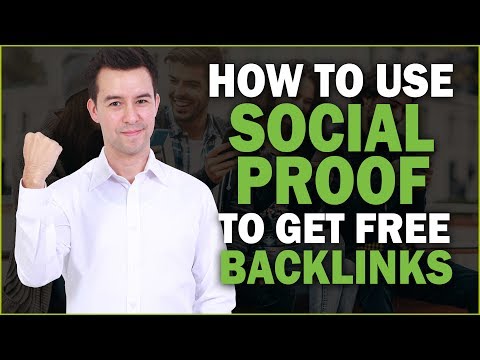
Before I developed these strategies, I was getting maybe 20 or 30 backlinks a month, even though I was putting in hours and hours of work a day just for link building.
It just wasn’t efficient.
And what do my numbers look like now?
We’re able to pull in at least 120 quality backlinks per month, per site.
Again, it just makes sense. If you mimic the natural way that businesses grow and develop over time, if you blend in with the crowd, and if you get the right backlinks at the right time, you’ll be a lean, mean, link building machine!
Other Ways To Get Valuable Backlinks
Guest posts and link insertions aren’t the only ways to get backlinks from other websites. Here are a few other options:
- Create linkable assets such as infographics, how-to guides, videos, resource centers, and more. You can even conduct your own research and publish original data! It’s time-consuming, but it’s a great way to get a ton of backlinks.
- Be active on forums or blogs. Comment on other people’s articles, answer questions on Quora, etc.
- Find unlinked mentions of your website or business, then contact the web owner to see if they can link to you, earning you a free link with very little effort.
- Reach out to influencers, bloggers, and other kinds of content promoters within your industry. Host an event, give away little tokens, or hand out discount codes and brand ambassadorships. You’ll most likely get a shoutout on their blog, expanding your reach to their followers and earning a backlink at the same time.
- Be active offline as well. Do interviews, organize events, book speaking engagements, and more. If you are doing something noteworthy, people will write about it.
From Day 1 To Page 1
Earning high-quality backlinks is always going to be a challenge, but this method makes the whole process as easy and pain-free as possible.
- In the Sandbox stage, you must focus on building trust in a natural way.
- In the Trustworthy stage, you can ramp up the guest posts and introduce link insertions for some extra power.
- In the Authority stage, you round out your backlink profile by adding more power and building editorial links.
This strategy lays out everything you need to do and when you need to do it. Now all that’s left is for you to actually put it to work!
If you need any further help with your backlink strategy, you’re in the right place, because that’s exactly what we do here at Authority Builders. Reach out to learn more.
Got Questions or Comments?
Join the discussion here on Facebook.

